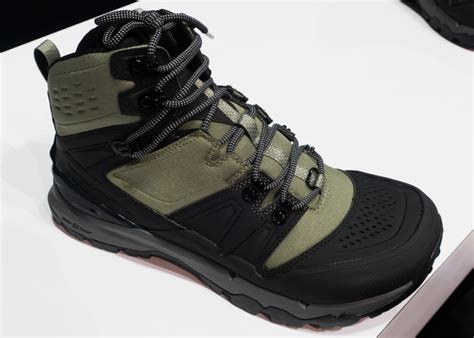5 Tips Zero Drop Hiking

When it comes to hiking, the type of footwear you choose can significantly impact your experience. Zero-drop hiking, which refers to hiking in shoes with no heel-to-toe drop, has gained popularity in recent years due to its potential benefits for foot health and hiking performance. However, making the transition to zero-drop hiking can be challenging, especially for those who are accustomed to traditional hiking boots with a significant heel-to-toe drop. Here are five tips to help you make a successful transition to zero-drop hiking:
1. Gradual Transition
The key to adapting to zero-drop hiking shoes is to make the transition gradually. If you’re used to hiking in shoes with a substantial heel-to-toe drop, switching directly to zero-drop shoes can lead to foot pain, ankle strain, and potentially even injuries. Start by incorporating zero-drop shoes into your shorter, less demanding hikes and gradually increase the distance and difficulty as your feet and ankles adjust. It’s also a good idea to start with walks around your neighborhood or local park before hitting the trails.
2. Strengthen Your Feet and Ankles
Strengthening your feet and ankles is crucial for successful zero-drop hiking. This can be achieved through specific exercises such as toe curls, heel raises, and ankle circles. Additionally, walking barefoot or in minimal footwear around your house can help strengthen the muscles in your feet. It’s essential to build up the strength and resilience of your foot and ankle muscles to support the different biomechanics of zero-drop hiking.
3. Choose the Right Zero-Drop Shoe
Not all zero-drop shoes are created equal, and choosing the right pair for hiking is vital. Look for shoes that are specifically designed for hiking and offer sufficient protection for your feet from rough terrain, sharp rocks, and other trail hazards. Consider factors like the shoe’s material, durability, waterproofing, and tread pattern. Some zero-drop shoes are designed more for road running or casual wear and may not provide the support or protection needed for hiking.
4. Pay Attention to Your Form
Zero-drop hiking often requires a slight adjustment in your hiking form. With less cushioning and no heel-to-toe drop, you may need to focus on midfoot or forefoot striking rather than heel striking. This can help reduce the impact on your joints and make your hiking more efficient. It’s also important to keep your posture straight, engage your core, and avoid overstriding. Practicing good hiking form can take time and practice, so be patient and focused on your technique.
5. Listen to Your Body
Lastly, it’s crucial to listen to your body and not push through pain or discomfort. If you’re experiencing persistent pain or soreness, especially in your feet, ankles, or calves, it may be a sign that you need to slow down your transition or revisit your hiking form. Rest and recovery are key components of any hiking regimen, and adapting to zero-drop hiking is no exception. Make sure to give your body the time it needs to adapt, and don’t hesitate to seek advice from a healthcare professional if you’re experiencing chronic pain or discomfort.
What are the benefits of zero-drop hiking shoes?
+Zero-drop hiking shoes can offer several benefits, including improved foot strength, better balance, and a more natural stride. They can also reduce the risk of certain injuries associated with traditional hiking boots, such as ankle sprains and plantar fasciitis.
How long does it take to adapt to zero-drop hiking shoes?
+The adaptation time can vary significantly from person to person, depending on factors such as current foot strength, hiking frequency, and the degree of transition from traditional shoes. It's common for hikers to need several weeks to a few months to fully adapt to zero-drop shoes.
Can anyone hike in zero-drop shoes?
+While zero-drop shoes can be beneficial for many hikers, they may not be suitable for everyone, especially those with certain foot or ankle conditions. It's recommended to consult with a healthcare professional or a knowledgeable outdoor gear specialist before making the switch to zero-drop hiking shoes.
In conclusion, transitioning to zero-drop hiking requires patience, understanding of proper form, and the right equipment. By following these tips and listening to your body, you can enjoy the potential benefits of zero-drop hiking while minimizing the risk of discomfort or injury. Remember, the goal of hiking is to enjoy nature and challenge yourself in a safe and sustainable way, and choosing the right footwear is a critical part of that journey.


